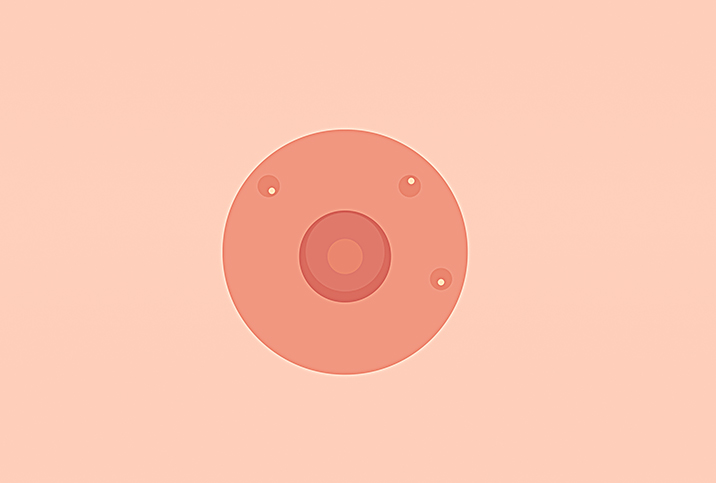Traits of Healthy Nipples and Warning Signs of Trouble

If you're reading this because you're trying to determine whether you have "normal" nipples, you might be a little out of luck: Nipples vary greatly in appearance, and it's hard to say if there's a true standard.
Nipples and areolas—which is the circular skin around the nipple—come in all different sizes and colors. The color of your nipples and areolas is often dependent on your skin tone and can range from light pink to brown or black.
Having some hair around your nipples is rarely discussed but is actually quite normal. Many women also have small bumps around their nipples that are the same color as their areolas. These are referred to as Montgomery glands. It's not uncommon for Montgomery glands to become more noticeable when a woman is aroused or pregnant.
Nipples and areolas—which is the circular skin around the nipple—come in all different sizes and colors.
And, of course, nipples come in an array of shapes. Some may be slightly puffy and protruded while others may be inverted or flat. Having really large or small areolas—or somewhere in between—is standard as well.
Because breasts and nipples are erogenous zones on the body, they can be sexually sensitive to the touch. Some women may really enjoy having their nipples touched during sex while others may not. In either case, there's nothing to be worried about.
Watch for nipple changes
If a healthy nipple can look like practically any combination of color, size and shape, you might think it would be impossible to discern what isn't normal.
What's crucial is to pay attention to any changes from your normal nipple. If you notice your nipple or areola presenting signs or traits that it doesn't normally, the first move you should make is to schedule an appointment to see your doctor.
There are certain symptoms in the nipples that are serious—possibly indicating the presence of breast cancer—so absolutely seek medical consultation if you notice:
- Burning, scaling, redness or other visible differences
- Nipple discharge that is not breast milk
- Irritated or itchy skin on the breast or nipple
- Swelling
Women in the United States have an estimated 12 percent chance of developing breast cancer in their lifetime. When breast cancer is detected early, the chances of successful treatment are generally higher. For this reason, you should seek clinical breast exams regularly, and for peace of mind, supplement with self-exams monthly.
The benefit of a self-exam
A self-exam has both a visual and a tactile component. Check on the appearance of your breast and nipples, but for signs that may not be visible to the eye, gently press around your breast tissue for any lumps or firm patches of skin. Even if a lump is not painful, you should talk to your doctor about it to ensure that it isn't the result of breast cancer.
Up to a quarter of all breast cancers are detected through a self-exam, and a significant portion of those cancers are caught during normal mammogram screening—the first-line screening method for all women.
Ultimately, it's important to remember that as long as they're healthy, there's no such thing as abnormal nipples. Just check on them every now and again.


















